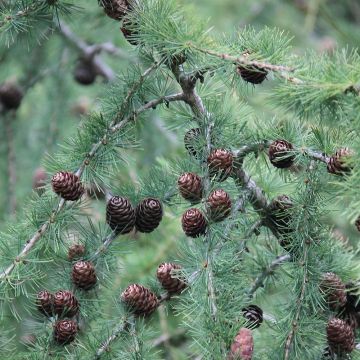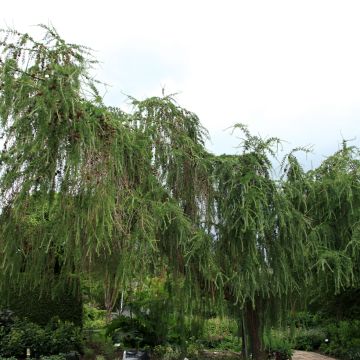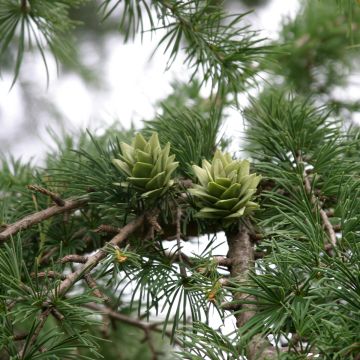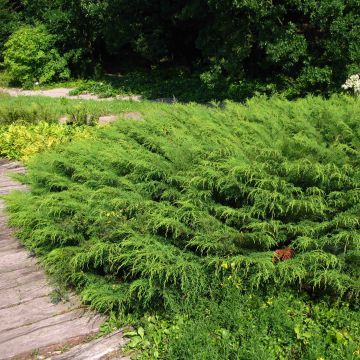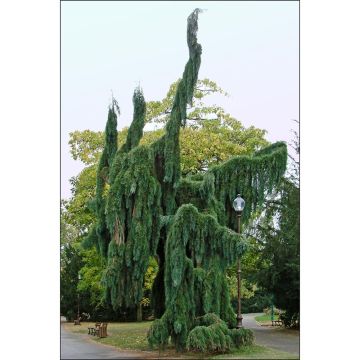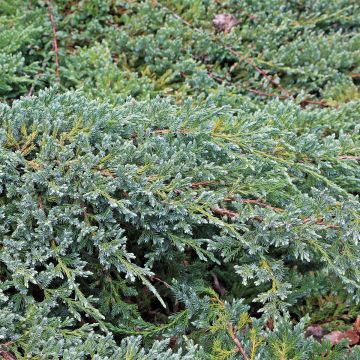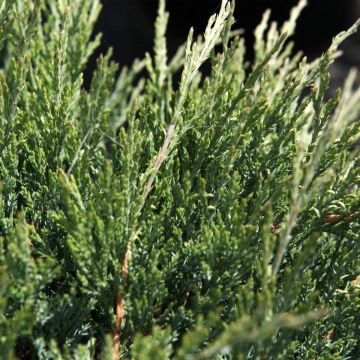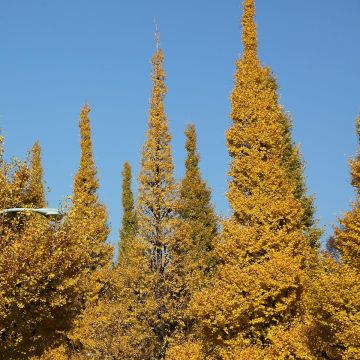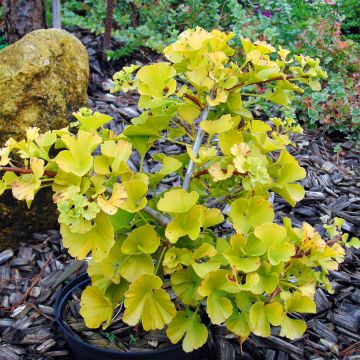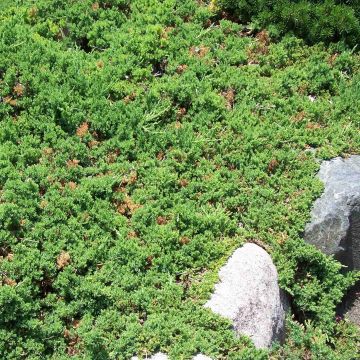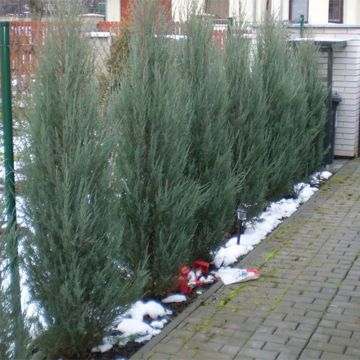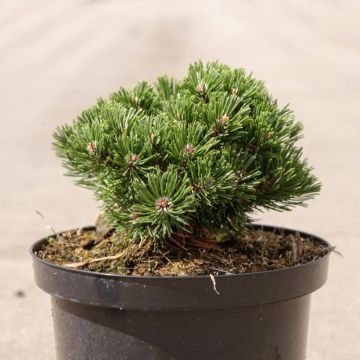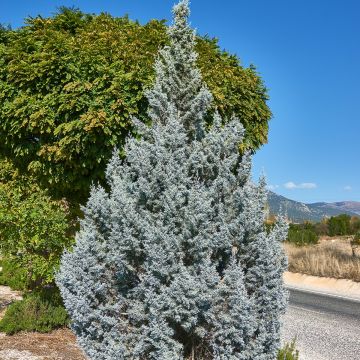País e idioma de entrega
Tu lugar de residencia parece ser:
Your country of residence is:
Para disfrutar de la mejor experiencia en nuestro sitio, puedes cambiar:
País de entrega:
Alemania
Andorra
Austria
Bulgaria
Bélgica
Canadá
Chequia
Chile
Chipre
Croacia
Dinamarca
Eslovaquia
Eslovenia
España
Estonia
Finlandia
Francia
Grecia
Hungría
Irlanda
Islandia
Italia
Letonia
Lituania
Luxemburgo
Malta
Mónaco
Países Bajos
Polonia
Portugal
Reino Unido
Rumanía
Suecia
Suiza
We only deliver seed and bulb products to your country. If you add other products to your basket, they cannot be shipped.
Idioma:
Francés
Alemán
Español
Inglés
My Account
Hola
Mis listas de favoritos
Plantfit
Mi cesta
Inicio de sesión / Registro
¿Ya eres cliente?
¿Todavía no eres cliente?
Crea su cuenta para poder realizar el seguimiento de tu pedido, acceder a nuestro servicio de atención al cliente y, si lo deseas, beneficiar de nuestras próximas ofertas.
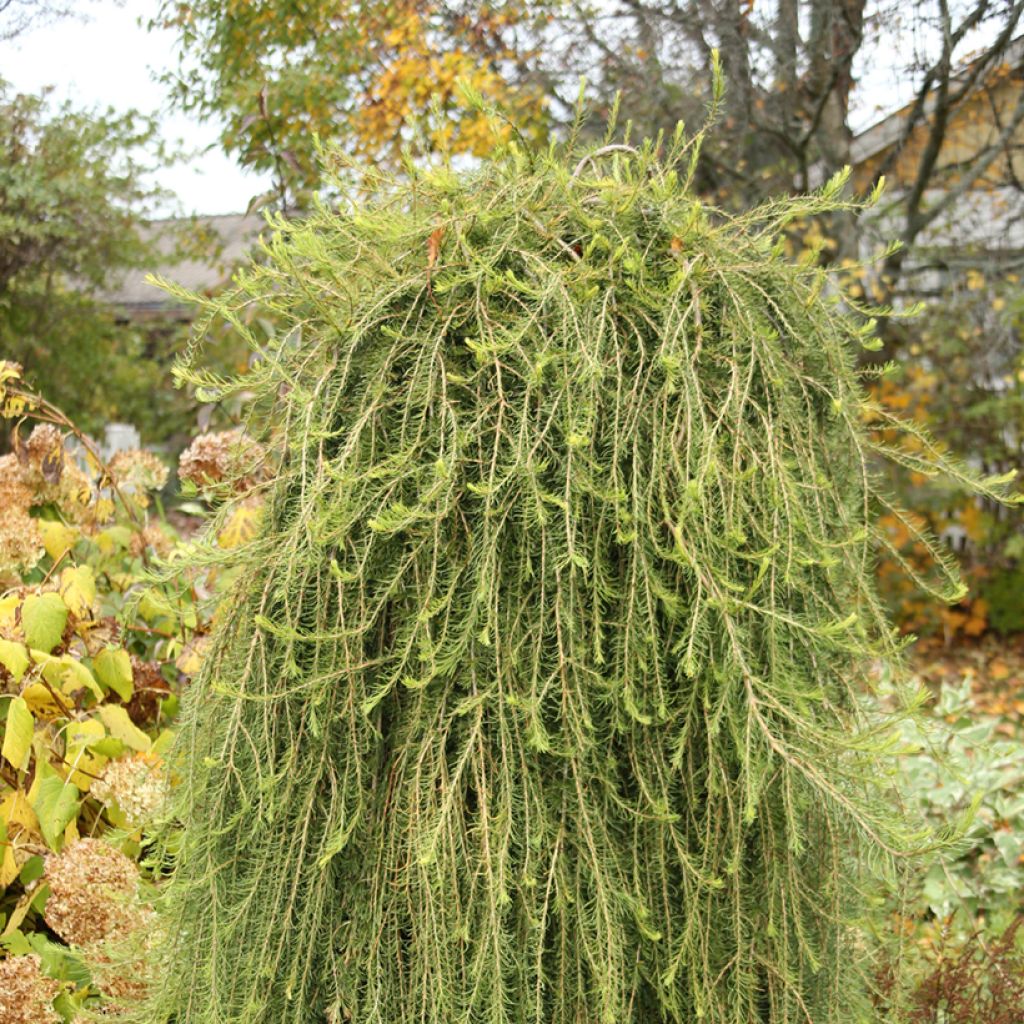

Larix decidua Puli - European larch, Common larch
Larix decidua Puli - European larch, Common larch
Larix decidua Puli
European larch, Common larch
Más de para que tu pedido salga hoy mismo.
Enviado por correo a partir del
Gastos de transporte a partir de 5,90 €. Artículos grandes, gastos de envío a partir de 6,90 €.
Más información
Este artículo no está disponible para tu país.
País de entrega:
Alemania
Andorra
Austria
Bulgaria
Bélgica
Canadá
Chequia
Chile
Chipre
Croacia
Dinamarca
Eslovaquia
Eslovenia
España
Estonia
Finlandia
Francia
Grecia
Hungría
Irlanda
Islandia
Italia
Letonia
Lituania
Luxemburgo
Malta
Mónaco
Países Bajos
Polonia
Portugal
Reino Unido
Rumanía
Suecia
Suiza
Programa tu fecha de entrega,
y elige tu fecha en la cesta
24 meses de garantía en el desarrollo de esta planta
Más información
Garantizamos la calidad de nuestras plantas durante un ciclo vegetativo completo, y sustituiremos a nuestro cargo cualquier planta que no se recupere en condiciones climáticas y de plantación normales.
Artículo voluminoso: entrega a domicilio únicamente con un coste de 6,90 € por pedido..
Entrega a domicilio exprés en 24-48 horas: 8,90 €.
¿Esta planta es adecuada para mi jardín?
Crear mi perfil Plantfit →
Descripción
The Larix decidua 'Puli' is a weeping, narrow variety with very drooping branches. Less wide than the 'Pendula' form, it also develops a foliage of a lighter tender green. This deciduous conifer is covered in spring with short tender green needles, which darken during the season. When autumn arrives, the foliage takes on a lovely yellow hue before falling to the ground. Very hardy, this variety of mountain origin appreciates a light and slightly moist soil, without too much limestone, even poor, as well as a sunny exposure.
The European Larch, Larix decidua, is a tall tree that can reach 30 m in height, belonging to the Pinaceae family, like Firs, Spruces, Cedars, and Pines. It is one of the few conifers, along with the Bald Cypress (Taxodium) and the Metasequoia, whose deciduous foliage falls in autumn. It is native to the mountains of central and southern Europe, where it is found at an altitude between 1400 and 2400 m. It is a pioneer species capable of improving poor or degraded soils, with great hardiness (up to -40°C). Highly valued for its wood, it adapts very well to cultivation in lowlands.
The Larix decidua 'Puli' is quite different from the original botanical species. This compact variety develops a very pronounced weeping habit with a narrow silhouette. At maturity, it reaches 3 m in height by 1.30 m wide. Its long, ramified branches hanging down to the ground, offer a regular appearance. In spring, the branches are adorned with bright green tender needle foliage, densely arranged in rosettes on the branches. The foliage then darkens slightly throughout the growing season, finally taking on beautiful yellow hues come autumn.
Extremely cold-resistant, this miniature conifer however fears drought. Perfectly suited to mountainous regions, it will not thrive in much drier southern areas. Therefore, it should be planted in fresh, well-drained soil, exposed to the sun or possibly under light shade. Once these basic needs are met, it proves to be quite easy to grow, requiring almost no maintenance, unless you wish to shape its appearance with some light pruning.
This Larix decidua 'Puli', with its elegant and narrow graphic silhouette, is a conifer that combines elegance and low requirements, perfectly suited for cultivation in small gardens or as a central piece in a massif with Japanese or exotic inspirations. Its narrow habit is ideal for enhancing an entrance. Also easy to cultivate in a large pot, it beautifies terraces and balconies. This conifer harmonizes beautifully with other conifers with bushy or spreading forms. In the design of a contemporary garden, conifers enrich the space with their graphic qualities, enhancing the aesthetic of shapes, silhouettes, and textures rather than seasonal flowering changes. They structure a massif in a sustainable way, delineate pathways, adorn terrace surroundings, and can replace trimmed boxwood due to their distinctive presence. Paired with wild grasses and heathers, they create a fascinating play of volumes and colours, offering complementary temperaments.
Porte
Floración
Follaje
Botánica
Larix
decidua
Puli
Pinaceae
European larch, Common larch
Hortícola
Otras Larix - Lárices
Plantación y cuidados
The Larix decidua Puli is a plant from a mountain climate that dreads arid situations. It should be planted in spring or from September to November in well-drained soil, but retaining some moisture, even poor, preferably slightly acidic, low in limestone, in a sunny or semi-shaded location. A mix containing coarse sand, heather soil, and compost added to garden soil will work very well, in a planting hole with sides and depth of 50 cm. Soak the root ball in a bucket of water for fifteen minutes before planting, then water generously once the hole is filled back in. If your soil is too heavy, a little trick is to plant your shrub on a mound and mulch it with non-limestone gravel. Water regularly during the first two years, and in case of prolonged drought. This very hardy conifer also dislikes heavy, waterlogged clay soils.
¿Cuándo plantar?
¿En qué lugar?
Cuidado
Este artículo todavía no ha recibido comentarios; sé el primero en compartir tu experiencia.
Coníferas
¿No has encontrado lo que buscas?
La rusticidad es la temperatura invernal más baja que una planta puede soportar sin sufrir daños graves o incluso la muerte. Sin embargo, la rusticidad se ve afectada por la ubicación (zona protegida, como un patio), la protección (cubierta de invierno) y el tipo de suelo (la rusticidad mejora con un suelo bien drenado).

Condiciones generales de uso del servicio de fotos del cliente
Con el fin de favorecer la interacción y el intercambio de experiencias entre jardineros, Promesse de fleurs ofrece varios servicios que permiten cargar contenidos en su Sitio web, en particular a través del módulo "Compartir fotos".
El usuario se compromete a no:
- Publicar contenidos ilegales, perjudiciales, insultantes, racistas, que inciten al odio, revisionistas, contrarios a las buenas costumbres, que atenten contra la vida privada o vulneren los derechos privados de terceros, en particular el derecho a la imagen de las personas y de los bienes, los derechos de propiedad intelectual o el derecho a la vida privada
- Publicar contenidos en nombre de un tercero
-
Asumir la identidad de un tercero y/o publicar cualquier información personal sobre un tercero
En general, los Usuarios se comprometen a abstenerse de cualquier comportamiento poco ético.
Todos los Contenidos, en particular, textos, comentarios, archivos, imágenes, fotos, vídeos, obras, etc., que pueden ser objeto de derechos de propiedad, derechos de propiedad intelectual, derechos de imagen u otros derechos privados, siguen siendo propiedad del Usuario, a reserva de los derechos limitados concedidos por la licencia definida a continuación a Promesse de fleurs. El Usuario es libre de publicar o no dicho Contenido en el Sitio web, especialmente a través del servicio "Compartir fotos", y acepta que este Contenido se haga público y libremente accesible, especialmente en Internet.
Reconocen, se comprometen y garantizan que disponen de todos los derechos y autorizaciones necesarios para dicha publicación en el Sitio, en particular en lo que respecta a la legislación vigente y a los derechos de privacidad, propiedad, propiedad intelectual, imagen, contratos o de cualquier otra naturaleza. Al publicar dicho Contenido en el Sitio, el Usuario es consciente de que compromete su responsabilidad como editor del Contenido en el sentido de la ley, y concede a Promesse de fleurs una licencia no exclusiva, gratuita y mundial para dicho Contenido, durante toda la duración de su publicación, incluidos los derechos de reproducción, representación, carga, visualización, ejecución, transmisión y almacenamiento.
Los usuarios también autorizan a que su nombre se asocie al Contenido y aceptan que esta asociación no siempre pueda realizarse.
Mediante su publicación, los usuarios autorizan que los Contenidos sean automáticamente accesibles en Internet, en particular en otros sitios y/o blogs y/o páginas web del sitio Promesse de fleurs, incluidas en particular las páginas de las redes sociales y el catálogo de Promesse de fleurs.
Los usuarios pueden obtener libremente la devolución de los contenidos confiados poniéndose en contacto con el servicio de atención al cliente a través del formulario de contacto.
Los periodos de siembra indicados en nuestro sitio web se aplican a los países y regiones de la zona 8 del USDA (Francia, Reino Unido, Irlanda, Países Bajos).
En zonas más frías (Escandinavia, Polonia, Austria...), retrase 3-4 semanas cualquier siembra al aire libre, o siembre en invernadero.
En climas más cálidos (Italia, España, Grecia, etc.), adelante unas semanas la siembra al aire libre.
El periodo de recolección indicado en nuestro sitio web se aplica a los países y regiones de la zona USDA 8 (Francia, Inglaterra, Irlanda, Países Bajos).
En las zonas más frías (Escandinavia, Polonia, Austria...) es probable que la cosecha de frutas y hortalizas se retrase 3-4 semanas.
En las zonas más cálidas (Italia, España, Grecia...), es probable que la cosecha se adelante, dependiendo de las condiciones meteorológicas.
El periodo de plantación indicado en nuestro sitio web se aplica a los países y regiones situados en la zona USDA 8 (Francia, Reino Unido, Irlanda, Países Bajos).
Variará en función de su lugar de residencia:
- En las zonas mediterráneas (Marsella, Madrid, Milán, etc.), el otoño y el invierno son los mejores periodos de plantación.
- En las zonas continentales (Estrasburgo, Múnich, Viena, etc.), retrase la plantación de 2 a 3 semanas en primavera y adelántela de 2 a 4 semanas en otoño.
- En las regiones montañosas (Alpes, Pirineos, Cárpatos, etc.), es mejor plantar a finales de primavera (mayo-junio) o a finales de verano (agosto-septiembre).
En climas templados, la poda de los arbustos de floración primaveral: forsitia, spireas, etc. debe realizarse justo después de la floración.
La poda de los arbustos de floración estival: árbol de Júpiter, perovskia, etc. puede realizarse en invierno o en primavera.
En las regiones frías y con plantas sensibles a las heladas, evite podar demasiado pronto, cuando aún pueden producirse heladas severas.
El periodo de floración indicado en nuestra página web se aplica a los países y regiones situados en la zona USDA 8 (Francia, Reino Unido, Irlanda, Países Bajos, etc.).
Variará en función de su lugar de residencia:
- En las zonas 9 a 10 (Italia, España, Grecia, etc.), la floración se producirá entre 2 y 4 semanas antes.
- En las zonas 6 a 7 (Alemania, Polonia, Eslovenia y regiones montañosas bajas), la floración se retrasará de 2 a 3 semanas.
- En la zona 5 (Europa Central, Escandinavia), la floración se retrasará de 3 a 5 semanas.
